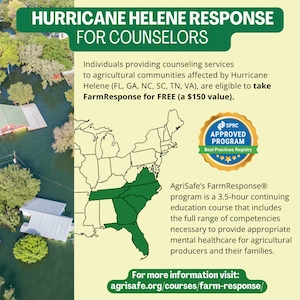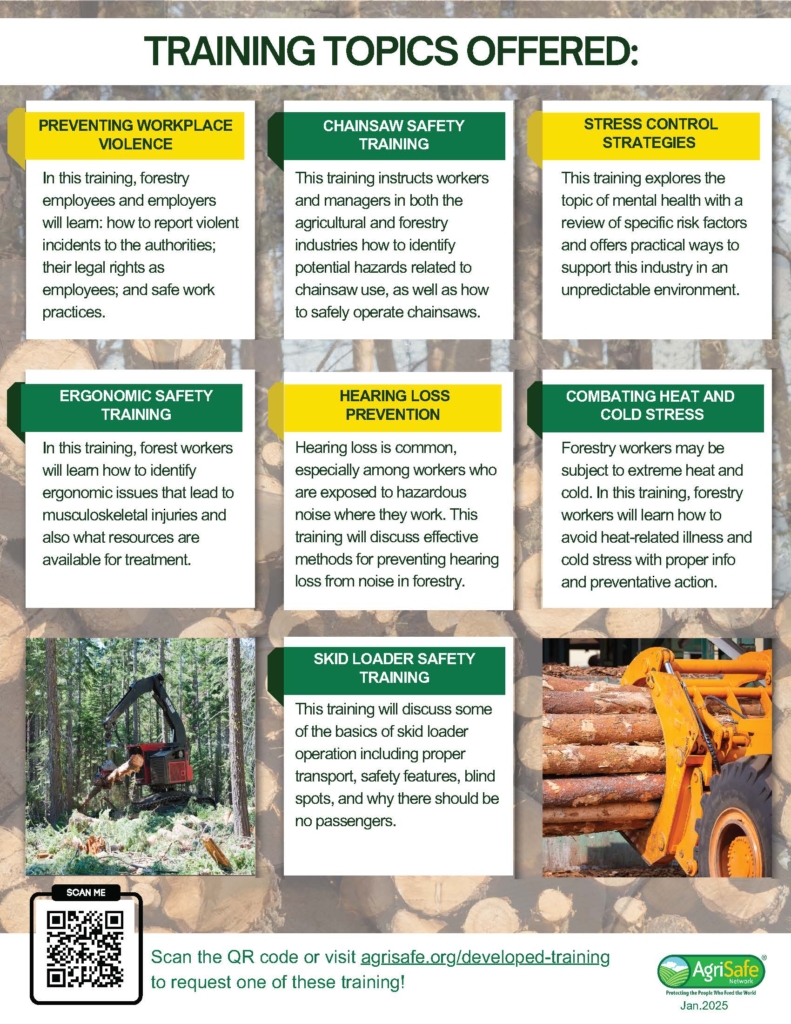Last updated on February 11th, 2025 at 02:33 pm
AgriSafe is working to reduce occupational health disparities among forest workers. Forest workers are in one of the most hazardous industries, with high rates of job-related injury, illness, and fatality. We believe that a continued focus on safety culture in the workplace can improve worker safety behavior and risk reduction practices.
Training topics include:
- Chainsaw Safety Training
- Combating Heat and Cold Stress for Forestry Workers
- Hearing Loss Prevention for Forest Workers
- Musculoskeletal and Ergonomic Safety for Forest Workers
- Preventing Workplace Violence for Forestry Workers
- Skid Loader Safety
- Stress Control Strategies for the Forestry and Timber Workforce
AgriSafe staff can provide training on these and other topics to your employees or group.
Click here to Request a Training.


